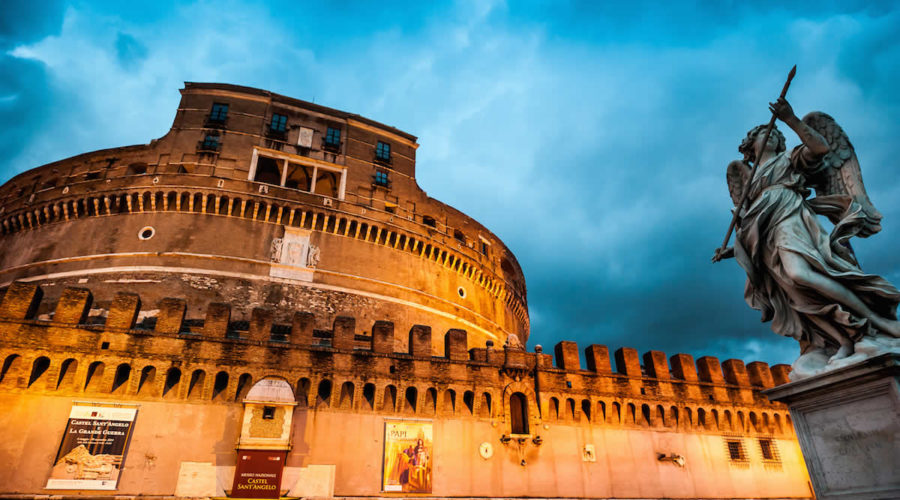Rome for Free: here are 7 places to see in Rome absolutely free!
If you want to discover Rome for free, never put your hands in your wallet or in any case if you are planning a trip to Rome, here are 10 tips on how to visit Rome for free without pay 1 euro!
1. Caravaggio, Michelangelo and more
The secret to enjoy free artistic masterpieces of great value is to visit churches and basilicas. The choice is very wide in Rome.
Some examples? Caravaggio, his works are exhibited in the churches of Santa Maria del Popolo, Sant’Agostino and San Luigi dei Francesi.
Michelangelo has been present with his Moses in San Pietro in Vincoli or the Pieta in St. Peter’s Basilica.
Certainly less famous but worth visiting are also the perspective paintings of Del Pozzo in St. Ignatius: first example of 3D history!

2. Colosseum and Roman Forum panoramic view
Enjoy a breathtaking view over the whole area of the Roman Forum by going on the panoramic terraces of the Roman Capitol, is an experience not to be missed.

This way you’ll literally have at your feet the entire Ancient Rome: from the arch of Settimio Severo to the Colosseum, from the Ancient Roman Basilicas to the Roman Curia, the Via Sacra and the house of the Vestal Virgins.

Walking along via Alexandrina, you will appreciate, very closely, the great Roman Forum of Trajan, Augustus and Nerva with huge markets, columns, temples, and much more!
3. Rome Panoramic Terraces
A great possibilities that Rome city offers is to be able to see all the sights of Rome from above thanks to famous scenic terraces. Unique of its kind, offering views of boundless Rome.

The most famous are certainly the Pincio terrace overlooking Piazza del Popolo, and the Gianicolo (Janiculum), but it is not to be neglected, for example, that in the Giardino degli Aranci (a Garden on the Aventine Hill): you will have at your feet the Tiber Island, and the Ghetto.
4. Squares, squares and squares again
Rome is an open-air museum and many are the masterpieces that you can simply enjoy strolling.
Gian Lorenzo Bernini and his portentous Fountain of the Four Rivers in Piazza Navona, the famous steps of Spanish Steps and Trinita dei Monti, the beautiful Trevi Fountain, the splendid architecture of the Valadier to Piazza del Popolo, Michelangelo of the Capitol, in short … so on and more and so forth!

5. Every First Sunday of the Month Free Museums in Rome
Every first Sunday of the month in Rome there are the Museums for Free! You simply arrange a visit in order to stay in Rome, the first Sunday of the month and will be enough.
National museums can be visited at no cost: the four National Roman Museum, the Baths of Caracalla, Castel Sant’Angelo.

But if the visit is scheduled during another period, here are a few more suggestions.
For lovers of archeology and Roman history, I suggest the Via Ostiense Museum housed inside the Porta San Paolo, or the important Vittoriano with the tomb dedicated to the Unknown Soldier, the Military Flags Memorial Museum, the Central Museum of the Risorgimento and space exhibition for modern and contemporary art, which always offers some curious and interesting exhibition to explore, all at no charge.
And also, remember that the Vatican Museums are free on the last Sunday of every month!
6. Parks, gardens and villas
The parks in Rome are not only an oasis of peace surrounded by greenery, in fact they preserve very valuable artistic treasures.
First of all those within the Villa Borghese park like the Giardino del Lago (Garden of the Lake), characterized by a romantic artificial island on which overlooks the Temple of Aesculapius, or the many other buildings within it, in fact the Villa Borghese has been called “Park Museums”.

And again Villa Doria Pamphili with the Casino del Bel Respiro, representative office of the Presidency of the Council of Ministers, or the Villa Celimontana park (Celio), featuring numerous pieces of the Mattei collection scattered around the gardens, among which stands out the Egyptian obelisk of Ramses II!
7. Isola Tiberina and Jewish Ghetto
A walk on the only island of the Tiber River (the river of Rome) is a must. On such a small area, there are thousands of years of history. Inhabited and frequented since Roman times, he has never ceased to represent the connection point, and walking between the two banks of the river.

A quite unique jewel, where you can also admire the extraordinary engineering feat of the embankments of the Tiber, which from the late 1800s to protect the city from flooding.
Goes to the visit, I suggest a walk to the nearby Jewish Quarter, which Pope Paul IV established as Ghetto in 1555 and was only finally dismantled at the end of ‘800. Theater of atrocities and abuses, for many centuries, today the ghetto shines and becomes lively and popular thanks to the efforts of the Jewish community that, following the deportation of 16 October 1943, wanted to return to reside here not to forget.




